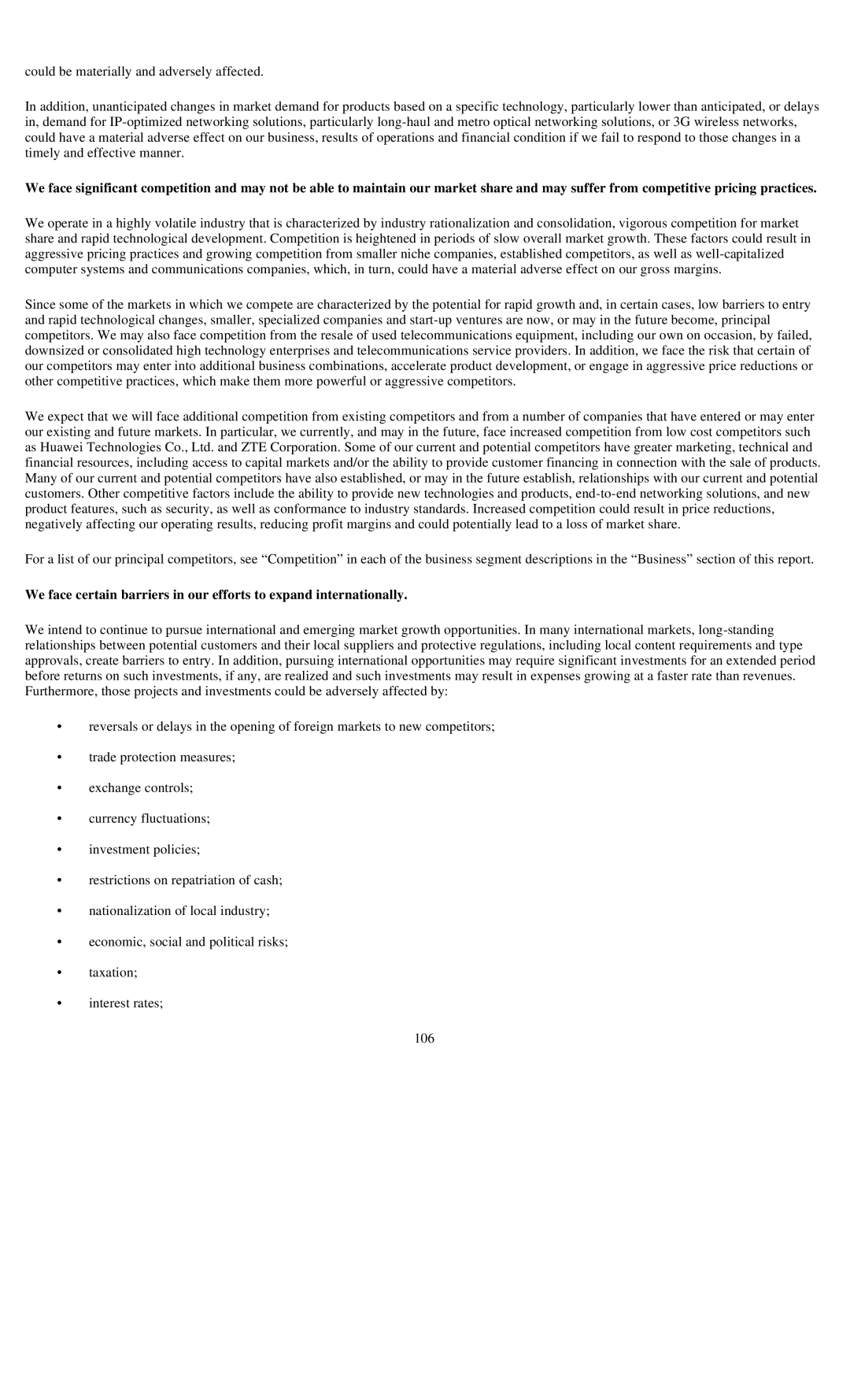could be materially and adversely affected.
In addition, unanticipated changes in market demand for products based on a specific technology, particularly lower than anticipated, or delays in, demand for
We face significant competition and may not be able to maintain our market share and may suffer from competitive pricing practices.
We operate in a highly volatile industry that is characterized by industry rationalization and consolidation, vigorous competition for market share and rapid technological development. Competition is heightened in periods of slow overall market growth. These factors could result in aggressive pricing practices and growing competition from smaller niche companies, established competitors, as well as
Since some of the markets in which we compete are characterized by the potential for rapid growth and, in certain cases, low barriers to entry and rapid technological changes, smaller, specialized companies and
We expect that we will face additional competition from existing competitors and from a number of companies that have entered or may enter our existing and future markets. In particular, we currently, and may in the future, face increased competition from low cost competitors such as Huawei Technologies Co., Ltd. and ZTE Corporation. Some of our current and potential competitors have greater marketing, technical and financial resources, including access to capital markets and/or the ability to provide customer financing in connection with the sale of products. Many of our current and potential competitors have also established, or may in the future establish, relationships with our current and potential customers. Other competitive factors include the ability to provide new technologies and products,
For a list of our principal competitors, see “Competition” in each of the business segment descriptions in the “Business” section of this report.
We face certain barriers in our efforts to expand internationally.
We intend to continue to pursue international and emerging market growth opportunities. In many international markets,
•reversals or delays in the opening of foreign markets to new competitors;
•trade protection measures;
•exchange controls;
•currency fluctuations;
•investment policies;
•restrictions on repatriation of cash;
•nationalization of local industry;
•economic, social and political risks;
•taxation;
•interest rates;
106
